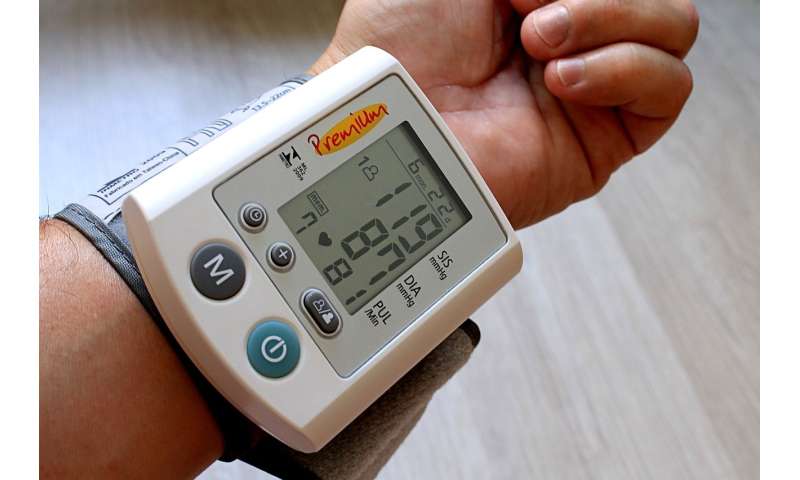Long work hours at the office linked to both regular and hidden high blood pressure
Office workers who spend long hours on the job are more likely to have high blood pressure, including a type that can go undetected during a routine medical appointment, according to a new study published today in the American Heart Association's journal Hypertension.
High blood pressure affects nearly half of Americans ages 18 and older and is a primary factor in more than 82,000 deaths per year. Approximately 15-30% of U.S. adults have a type of the condition called masked hypertension, meaning their high blood pressure readings are normal during health care visits but elevated when measured elsewhere.
The new study, conducted by a Canadian research team, enlisted more than 3,500 white-collar employees at three public institutions in Quebec. These institutions generally provide insurance services to the general population. Compared with colleagues who worked fewer than 35 hours a week:
- Working 49 or more hours each week was linked to a 70% greater likelihood of having masked hypertension and 66% greater likelihood of having sustained hypertension- elevated blood pressure readings in and out of a clinical setting.
- Working between 41 and 48 hours each week was linked to a 54% greater likelihood of having masked hypertension and 42% greater likelihood of having sustained hypertension.
- The findings accounted for variables such as job strain, age, sex, education level, occupation, smoking status, body mass index and other health factors.
"Both masked and sustained high blood pressure are linked to higher cardiovascular disease risk," said lead study lead author Xavier Trudel, Ph.D., assistant professor in the social and preventive medicine department at Laval University in Quebec, Canada.
"The observed associations accounted for job strain, a work stressor defined as a combination of high work demands and low decision-making authority. However, other related stressors might have an impact," Trudel said. "Future research could examine whether family responsibilities—such as a worker's number of children, household duties and childcare role—might interact with work circumstances to explain high blood pressure."
The five-year study involved three waves of testing—in years one, three and five. To simulate in-clinic blood pressure readings, a trained assistant provided participants with a wearable monitor to check each participant's resting blood pressure three times in one morning. For the rest of the workday, the participant wore the blood pressure monitoring device, which took readings every 15 minutes—collecting a minimum of 20 additional measures for one day. Average resting readings at or above 140/90 mmHg, and average working readings at or above 135/85, were considered high.
In all, almost 19% of the workers had sustained hypertension, which included employees who were already taking high blood pressure medications. More than 13% of the workers had masked hypertension and not receiving treatment for high blood pressure. "The link between long working hours and high blood pressure in the study was about the same for men as for women," Trudel said.
The study "did not include blue-collar workers (employees who are paid by the hour and perform manual labor work in positions such agriculture, manufacturing, construction, mining, maintenance or hospitality service), therefore, these findings may not reflect the impact on blood pressure of shift-work or positions with higher physical demands," the authors said. Other limitations include the study's measurement of blood pressure only during daytime hours, and the omission of hours worked outside participants' primary job.
The authors noted several strengths of the study, including its many volunteers, accounting for multiple factors that can impact blood pressure, repeated testing over several years, the use of wearable monitors instead of relying on workers' reports of their blood pressure readings; and the use of the same monitors for all blood pressure measurements.
"People should be aware that long work hours might affect their heart health, and if they're working long hours, they should ask their doctors about checking their blood pressure over time with a wearable monitor," Trudel said. "Masked hypertension can affect someone for a long period of time and is associated, in the long term, with an increased risk of developing cardiovascular disease. We have previously shown that over five years, about 1 out of 5 people with masked hypertension never showed high blood pressure in a clinical setting, potentially delaying diagnosis and treatment."

No comments:
Post a Comment